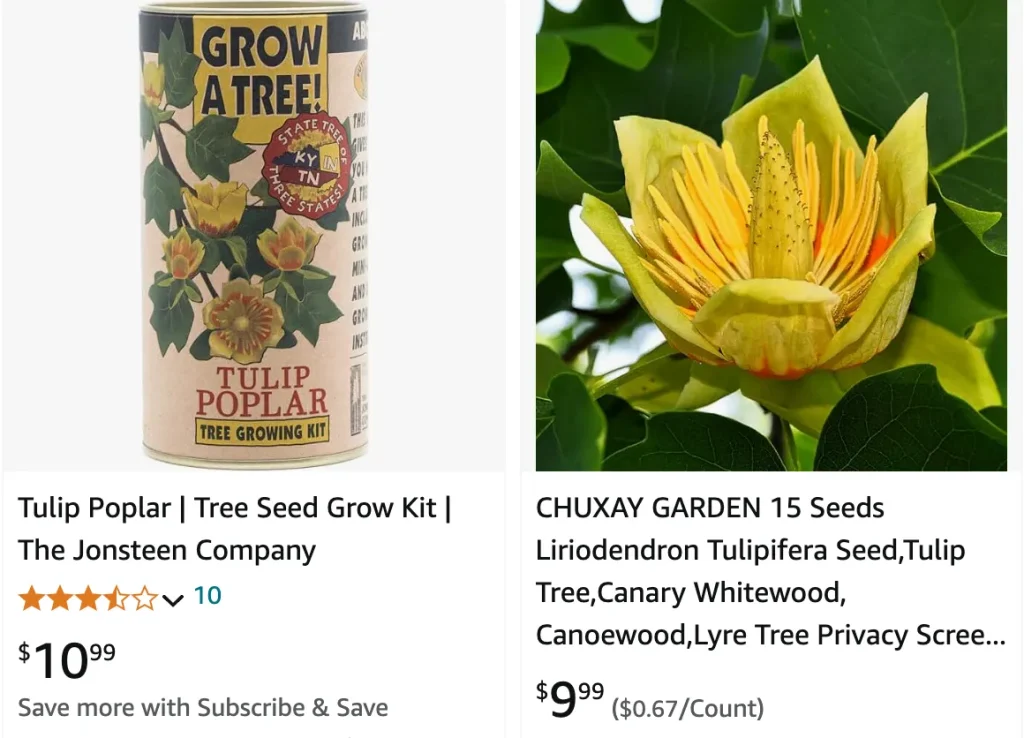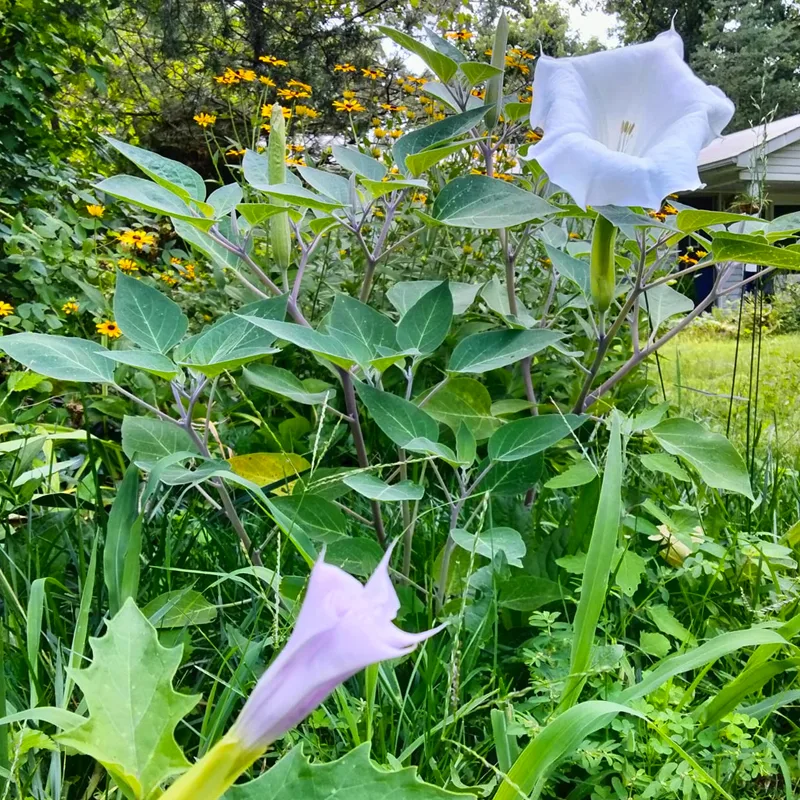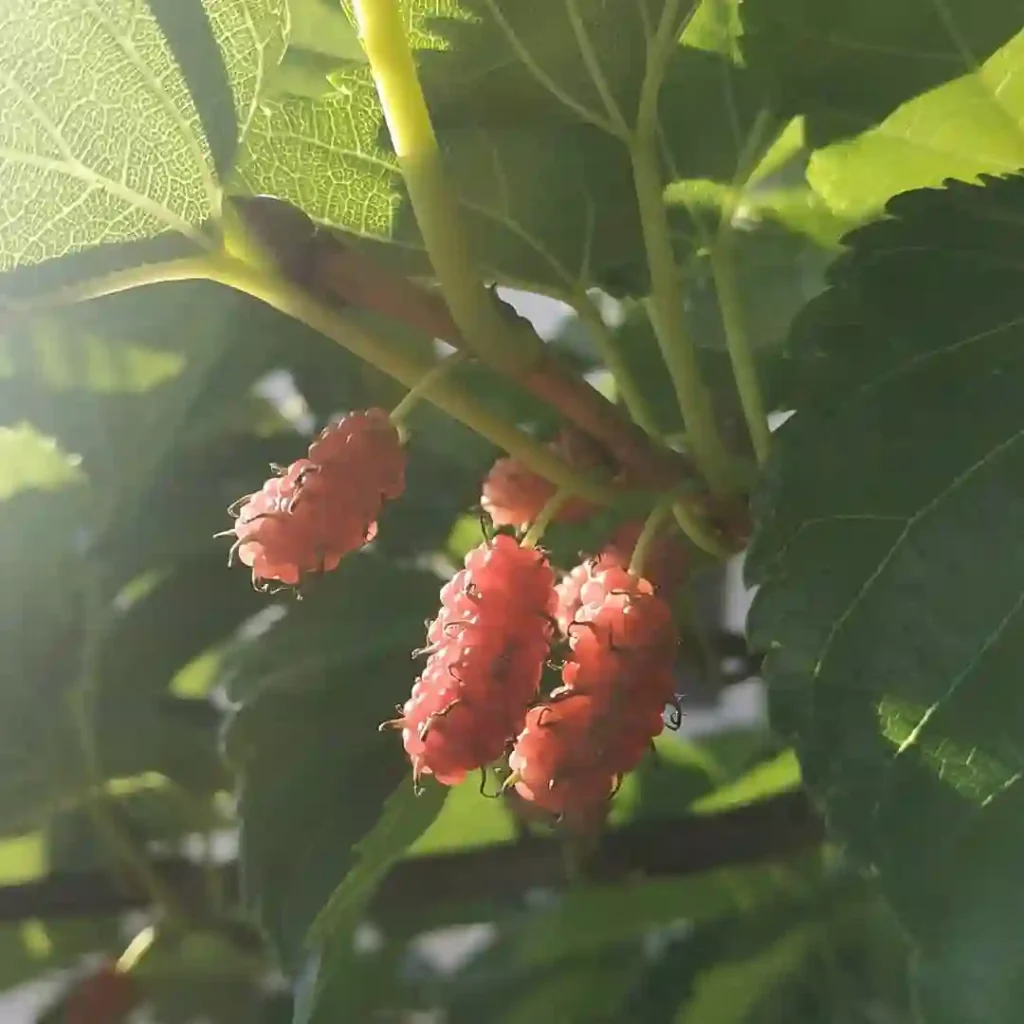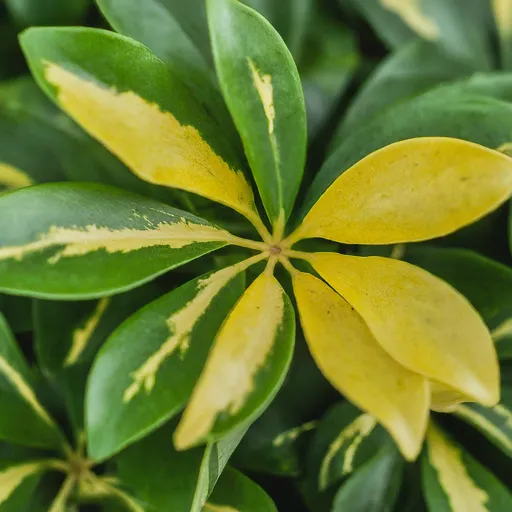
What is a Tulip Tree?
The Tulip Tree, scientifically known as Liriodendron Tulipifera, is a majestic and fast-growing tree native to North America. It’s known for its tall, straight trunk and unique tulip-shaped flowers, which give it its name.
Tulip Tree vs Tulip Poplar
Tulip Tree and Tulip Poplar are two names for the same tree, Liriodendron Tulipifera. The Tulip Tree is also referred to as the Tulip Poplar or Yellow Poplar, although it’s not related to true poplars. The terms are used interchangeably, but “Tulip Tree” is more commonly used in landscaping and horticulture contexts.
Tulip Tree vs Magnolia
Tulip Trees and Magnolias are distinct species, although they both produce showy flowers. Tulip Trees (Liriodendron tulipifera) have tulip-shaped leaves and flowers, while Magnolias (Magnolia spp.) have large, fragrant blooms and a variety of leaf shapes. Magnolias are often smaller and more shrub-like compared to the towering Tulip Tree.
What does a Tulip Tree look like?
A Tulip Tree is easily recognizable by its distinctive features. It has a straight, tall trunk that can reach up to 90 feet or more in height. The leaves are broad, four-lobed, and resemble a tulip’s silhouette. The flowers are greenish-yellow with orange bands at the base, resembling tulips, and they appear in late spring to early summer.
When does a Tulip Tree blossom?
Tulip Trees typically blossom in late spring, around May to June. The stunning flowers attract pollinators like bees and butterflies. The bloom period is relatively short, but the flowers add a spectacular splash of color to the landscape.
How fast does a Tulip Tree grow?
Tulip Trees are known for their rapid growth rate. They can grow 2 to 3 feet per year under ideal conditions. This makes them an excellent choice for gardeners looking to quickly establish a shade tree or add vertical interest to their landscape.
How to get rid of aphids on a Tulip Tree?
Aphids can be a common pest on Tulip Trees. To manage an aphid infestation, you can spray the tree with a strong jet of water to dislodge the insects. Additionally, introducing beneficial insects like ladybugs or applying insecticidal soap can help control aphid populations.
When to prune a Tulip Tree?
The best time to prune a Tulip Tree is during its dormant season, in late winter to early spring. Pruning during this period minimizes the risk of disease and allows the tree to heal before the growing season. Focus on removing dead, damaged, or crossing branches to maintain the tree’s structure and health.
How long does a Tulip Tree live?
Tulip Trees are long-lived, with an average lifespan of 200 to 300 years under optimal conditions. Proper care, including adequate watering, fertilization, and protection from pests and diseases, can help ensure a Tulip Tree lives a long, healthy life.
Where can I buy a Tulip Tree?
Tulip Trees can be purchased from local nurseries, garden centers, and online plant retailers. When buying a Tulip Tree, look for healthy specimens with a well-developed root system to ensure successful establishment in your garden.
Why is my Tulip Tree dripping sap?
Tulip Trees may drip sap due to a condition called “honeydew,” which is excreted by aphids and other sap-sucking insects. This sticky substance can attract mold and other pests. Controlling the insect population on your tree can help reduce sap dripping.
Are Tulip Tree flowers edible?
Tulip Tree flowers are not considered edible. While they are not toxic to humans, they are not commonly consumed due to their bitter taste and lack of culinary use.
Are Tulip Tree flowers poisonous to dogs?
Tulip Tree flowers are not known to be toxic to dogs. However, it’s always best to monitor pets around unfamiliar plants and consult a veterinarian if you suspect your dog has ingested any part of the tree.
Are Tulip Tree roots invasive?
Tulip Tree roots are not typically considered invasive, but they can spread widely to support the tree’s rapid growth. It’s essential to plant Tulip Trees away from foundations, sidewalks, and other structures to prevent potential root-related issues.
How to care for a Tulip Tree?
Caring for a Tulip Tree involves providing it with full sun to partial shade and well-drained soil. Regular watering is crucial, especially during dry spells, to support its rapid growth. Mulching around the base can help retain moisture and suppress weeds. Fertilizing in early spring with a balanced fertilizer can also promote healthy growth.
How to propagate a Tulip Tree?
Tulip Trees can be propagated from seeds or cuttings. Seeds should be collected in the fall and stratified over the winter before planting in the spring. Cuttings can be taken in late spring to early summer and rooted in a mixture of sand and peat moss. Propagation can be challenging, so purchasing a young tree from a nursery is often more straightforward.
What to plant with a Tulip Tree?
Companion planting with Tulip Trees should consider their mature size and root spread. Suitable companion plants include shade-tolerant perennials and ground covers like hostas, ferns, and astilbes. These plants can thrive in the dappled shade provided by a mature Tulip Tree.
Common problems with Tulip Trees?
Tulip Trees can face several issues, including aphid infestations, canker diseases, and verticillium wilt. Regular monitoring and prompt treatment of pests and diseases can help maintain the tree’s health. Pruning to improve air circulation and removing infected branches can also mitigate disease problems.
Tulip Trees are a stunning addition to any landscape, offering rapid growth, beautiful flowers, and long-term shade. With proper care and attention, these trees can thrive and provide beauty for generations.
If i die, water my plants!



